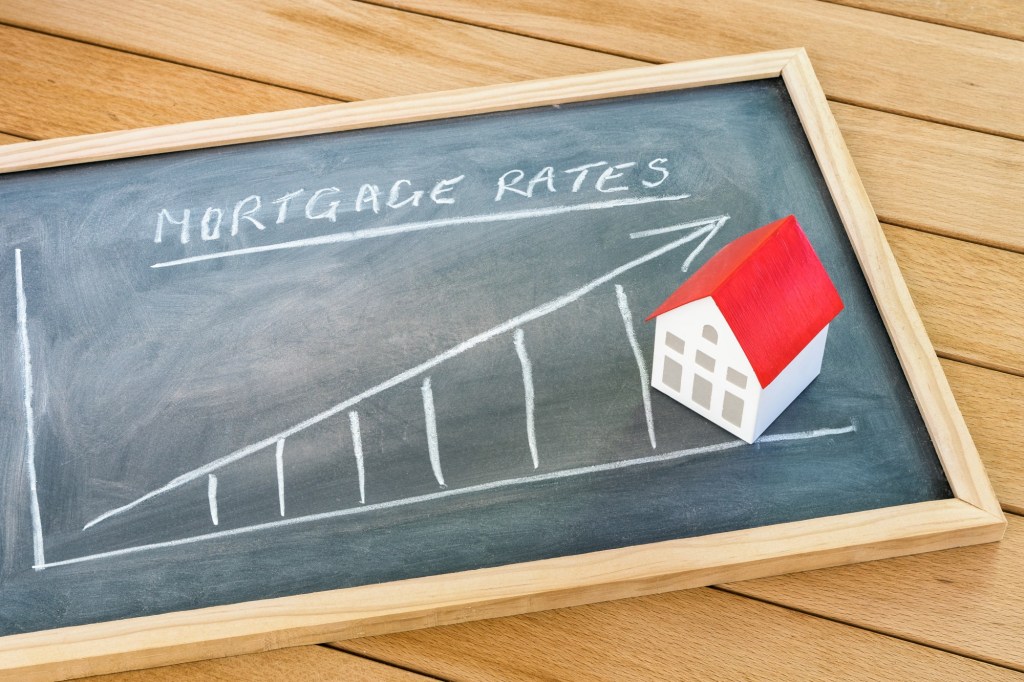
Every dollar counts, especially during inflationary times.
That’s why homebuyers or owners should consider cheaper, adjustable rates when shopping for mortgages.
Today, a well-qualified borrower can get an adjustable-rate mortgage or ARM at under 6%, locked in for the first seven years. That’s 5.99% with just 1 point cost. One point equals 1% of the loan amount. Comparably, a 30-year fixed rate is 6.375% with 1 point cost. That’s 0.385% cheaper for the ARM.
Let’s do the math: Take the maximum Fannie Mae conforming loan of $806,500. The ARM principal and interest payment at 5.99% is $4,830. The fixed-rate principal and interest payment at 6.375% is $5,032. The payment difference is a cool $202 monthly. Multiply that payment difference over the first seven years, or 84 monthly payments, and you save $16,968. Not bad.
What happens at the end of the first seven years?
The ARM goes to an every 6-month adjustment rate, commonly called a 5/1/5. The first adjustment can go as low as 3% or as high as 10.99%. After the first adjustment, the rate can only change by a maximum of 1% (up or down) for the remaining life of the loan. And the lifetime cap is a maximum of 5% over the start rate.
Each subsequent adjustment is calculated by adding the “secured overnight financing rate,” an interest rate used to measure the cost of borrowing money overnight by using Treasury securities as collateral.
For example, the new rate would be calculated by using the 30-day SOFR index, which today sits at 4.346%. The lender adds 3%, bringing the new rate to 7.346%. The new monthly payment is $5,554,
Obviously, if the SOFR index was higher or lower at that point in time, the interest rate and payment would follow suit accordingly.
Where this gets tricky is predicting where the SOFR index is going to be in seven years compared with the original fixed-rate pricing. If the index drops, you can just ride the rate down. If the index is higher, you can opt to refinance into a cheaper mortgage or leave the rate alone.
Remember, you saved nearly $17,000 in the first seven years. A refinance could cost you as little as nothing (no-cost refi, if you accept a higher rate) or as much as $12,000, if you are paying a point to buy the rate down. Regardless, you are still dollars ahead by starting with the ARM.
Let’s say your loan amount is over $806,500. A five-year ARM is available as low as 5.99% to 6.625%, depending on down payment, loan amount, etc., with 1 point cost. The comparable fixed rate loan would be anywhere from 6.625% to 7% depending on down payment, lowest middle FICO score and loan amount.
While this is more nuanced, the idea is to price your loan out based on your parameters. For example, let’s say you qualified for the 5.99% interest rate on a $950,000 loan. The principal and interest payment would be $5,690.
Let’s say the fixed-rate based on the same parameters came in at 6.625%. The principal and interest payment would be $6,083. The payment difference between 5.99% and 6.625% is $393 per month. Multiply that over five years or 60 months and the savings amounts to $23,580. That’s certainly worth consideration.
For jumbo loans (more than $1,209,750 in Los Angeles County and Orange County; more than $1,077,550 in San Diego County and more than $806,500 in the Inland Empire), you should check out what banks are offering on five-year, seven-year and 10-year ARMs compared with fixed rates.
Something else to consider is interest only ARMs.
For example, say you can get an interest-only rate for the first 10 years (mortgage amortizes in the remaining 20 years if you don’t pay principal and interest) at 6.75%. Take $1.5 million loan amount at 6.75% interest-only. The monthly payment would be $8,437.
Now take a 30-year amortized fixed rate at 6.625%. That principal and interest payment is $9,605. The monthly savings is $1,168 if you were to take the interest-only mortgage. Multiply that by 10 years or 120 payments and your payment savings are $140,160.
This program can help to improve your payment affordability, especially if you don’t plan on keeping the home for more than 10 years. Obviously, you won’t be paying the balance down whereas you would with the amortized fixed rate mortgage.
If the uncertainty of the ARM makes you too nervous, then stick with the fixed rate. For everyone else, it’s something to consider, especially if you think rates will eventually come down because you’ll refinance.
Freddie Mac rate news
The 30-year fixed rate averaged 6.85%, 2 basis points lower than last week. The 15-year fixed rate averaged 6.04%, 5 basis points lower than last week.
The Mortgage Bankers Association reported a 6.6% mortgage application decrease compared with one week ago.
Bottom line: Assuming a borrower gets the average 30-year fixed rate on a conforming $806,500 loan, last year’s payment was $27 more than this week’s payment of $5,285.
What I see: Locally, well-qualified borrowers can get the following fixed-rate mortgages with one point: A 30-year FHA at 5.75%, a 15-year conventional at 5.625%, a 30-year conventional at 6.375%, a 15-year conventional high balance at 5.99% ($806,501 to $1,209,750 in LA and OC and $806,501 to $1,077,550 in San Diego), a 30-year-high balance conventional at 6.75% and a jumbo 30-year fixed at 6.5%.
Eye-catcher loan program of the week: A 30-year mortgage, with 30% down locked for the first 5 years at 5.99% with 1 point cost.
Clarification
Last week, my column featured down-payment assistance programs, including the Ladder Up program by City National Bank. This week, we are clarifying that the bank’s $50,000 down-payment program is for homebuyers only in majority Black or Hispanic census tracks in the Los Angeles, Glendale and Long Beach metropolitan statistical areas.
Jeff Lazerson, president of Mortgage Grader, can be reached at 949-322-8640 or jlazerson@mortgagegrader.com.
Originally Published:



